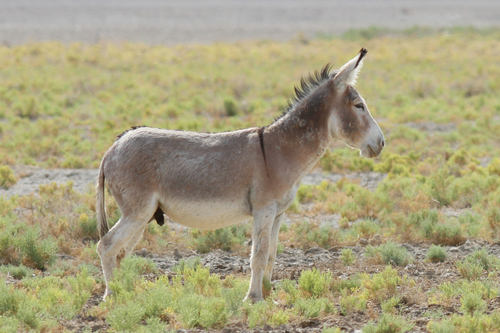
Donkey
The resilient Equus asinus, or donkey, thrives in arid lands with its remarkable memory and strength. Recognizable by its long ears and braying call, this social creature plays a vital role in agriculture, showcasing intelligence and loyalty across diverse environments.
15-30 years
Lifespan
200.0 - 258.0 kg
Weight
Height: 90 - 130 cm
Size
Brown, Grey, Black
Color
15 mph
Top Speed
Characteristics
Equus asinus, commonly known as the donkey, is a domesticated member of the horse family, Equidae. Known for their sturdy build, donkeys have long ears, a thick coat, and a distinctive braying call. They are highly intelligent, social animals often used as working animals in agriculture due to their strength and endurance. Donkeys are adapted to arid regions and have excellent memory, capable of remembering places and individuals after years of separation.
Distribution Range of the Donkey
Equus asinus, commonly known as the donkey, is native to the northeastern regions of Africa, specifically the area that includes present-day Somalia, Eritrea, and Ethiopia. This species was first domesticated in these regions before spreading to other parts of the world.
Donkey's Habitat
Environmental Conditions
The natural habitat of Equus asinus consists of arid or semi-arid regions with sparse vegetation. The species is well-adapted to hot, dry environments and can often be found in desert fringes, scrublands, and open plains. These areas typically experience low rainfall and high temperatures.
Ecological Niche
Equus asinus primarily occupies a niche as a herbivore in arid ecosystems, feeding on a variety of grasses, shrubs, and drought-resistant plants. Their ability to digest coarse, fibrous plant materials allows them to thrive in environments where other herbivores might struggle to survive. They play a role in seed dispersal and help maintain the ecological balance by grazing, which can prevent bush encroachment.
Copyright @ Nature Style Limited. All Rights Reserved.
 English
English